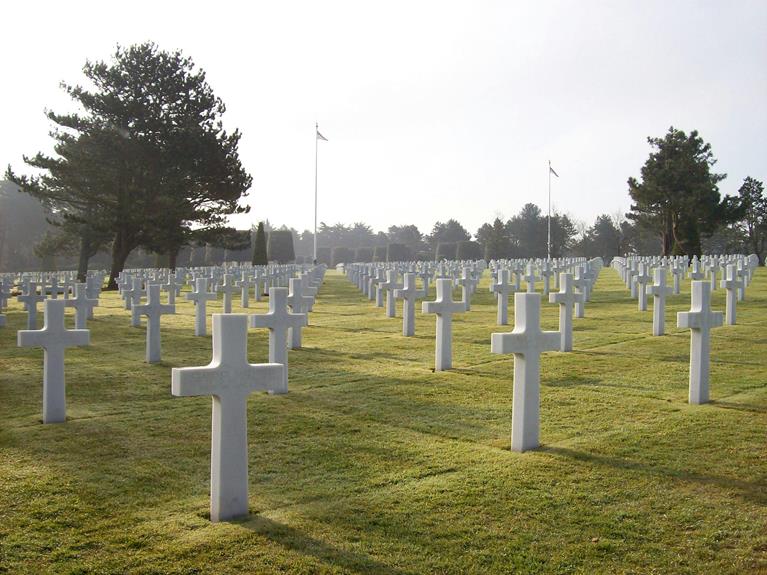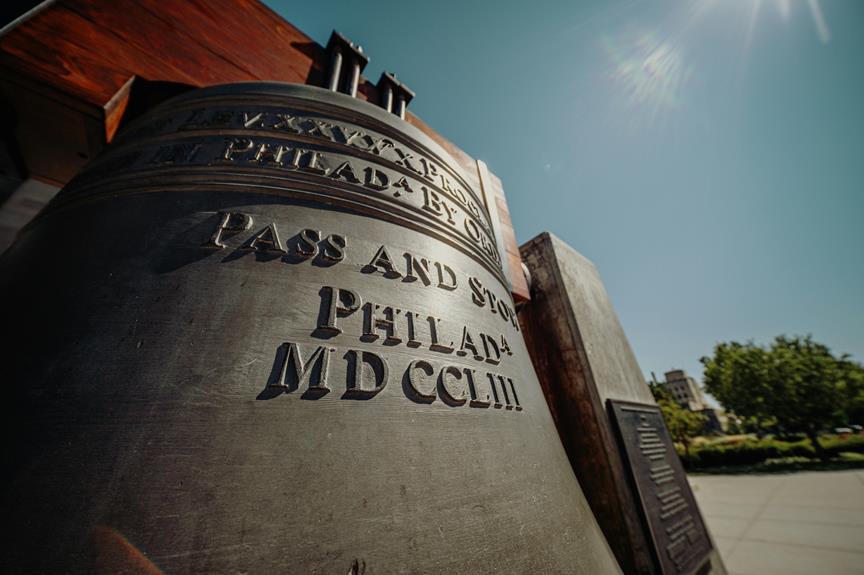War memorials and museums stand as solemn tributes to the human cost of conflicts past, preserving the legacies of those who have served and sacrificed. These institutions serve not just as repositories of history, but as living affirmations to the courage and resilience of individuals faced with extraordinary circumstances. Through their carefully curated exhibits and immersive experiences, they offer visitors a window into the past, fostering a deeper understanding of the sacrifices made in the name of freedom and peace. But what lies beyond the artifacts and monuments is a tapestry of stories waiting to be unraveled, shedding light on the complexities of war and the enduring spirit of humanity.
Key Takeaways
- War memorials and museums serve as poignant reminders of historical conflicts and commemorate sacrifices made by individuals.
- They play a crucial role in cultural remembrance, standing as symbols of national pride in various forms.
- Museums employ conservation techniques to preserve artifacts and safeguard historical documents and cultural heritage.
- Exhibits honor war heroes through personal tributes, interactive displays, and educational contexts to ensure their sacrifices are remembered.
- Educational initiatives and community involvement help preserve veterans' legacies, engage society, and foster gratitude and respect for their contributions.
Significance of War Memorials
War memorials serve as poignant reminders of historical conflicts, commemorating the sacrifices made by individuals in service of their nations. These monuments play an important role in cultural remembrance, preserving the memory of past events for current and future generations. They stand as symbols of national pride, honoring the bravery and dedication of those who fought for their country. War memorials come in various forms, from statues and plaques to grand monuments and memorial parks, each telling a unique story of valor and sacrifice.
The significance of war memorials lies not only in their physical presence but also in the emotional and historical weight they carry. They provide a space for reflection, allowing people to pay their respects and remember the hardships faced during times of conflict. These sites often become focal points for ceremonies and events, bringing communities together to honor their shared history.
Moreover, war memorials serve as educational tools, offering insights into the past and helping to make sure that the sacrifices of the fallen are never forgotten. By preserving the memories of those who served, these monuments contribute to a deeper understanding of the impact of war on societies and the importance of peace. In essence, war memorials play an important role in shaping national identity and fostering a sense of unity and remembrance among citizens.
Role of Museums in Preserving History
Museums play an essential role in preserving history by safeguarding artifacts, documents, and cultural heritage for present and future generations. The preservation of historical artifacts involves a range of methods to guarantee their longevity and significance. Here are three key preservation methods commonly used in museums:
- Climate Control:
Museums carefully control temperature and humidity levels to prevent deterioration of artifacts. Fluctuations in these conditions can cause irreversible damage, such as warping or cracking of delicate materials. By maintaining stable climate control, museums can prolong the lifespan of historical artifacts.
- Conservation Treatments:
Conservation specialists employ various treatments to stabilize and restore artifacts. These treatments can include cleaning, repairing damage, and applying protective coatings. Through meticulous conservation efforts, museums can ensure that historical artifacts remain intact and visually appealing for future generations to appreciate.
- Storage and Display Techniques:
Proper storage and display are critical aspects of artifact preservation. Museums use archival materials and techniques to store artifacts safely, protecting them from light exposure, dust, and pests. Additionally, thoughtful display methods, such as using UV-protective glass and controlled lighting, help minimize the risk of damage while allowing artifacts to be viewed by the public.
Impact of Memorials on Visitors
The presence of war memorials has a profound impact on visitors, evoking emotions and encouraging reflection on the sacrifices made in times of conflict. These memorials create an emotional connection between the visitors and the historical events being commemorated. The experience of standing before a memorial, whether it be a monument, statue, or engraved wall, often stirs feelings of reverence, gratitude, and sometimes sadness. Visitors may find themselves contemplating the realities of war, the lives lost, and the courage displayed in the face of adversity.
Such emotional connections can have lasting psychological effects on visitors. The act of paying respects at a war memorial can evoke a sense of national pride, unity, and a renewed appreciation for peace. On the other hand, it may also bring about feelings of sorrow, empathy, and a deeper understanding of the human cost of war. These experiences can lead to introspection, fostering a sense of empathy towards past and present conflicts worldwide.
Moreover, war memorials serve as reminders of the importance of honoring those who have served and sacrificed for the greater good. They provide a space for collective mourning and remembrance, allowing visitors to acknowledge and confront the harsh realities of war. Ultimately, the impact of war memorials on visitors extends beyond a mere historical lesson; it touches the core of human emotions and helps shape perspectives on peace, conflict, and the value of freedom.
Honoring War Heroes Through Exhibits
In the context of war memorials and museums, the exhibits dedicated to honoring war heroes play a crucial role in preserving their legacies and showcasing their sacrifices. These exhibits serve as a powerful medium through which visitors can pay their respects and learn about the individuals who fought bravely for their countries. Here are three key ways in which these exhibits achieve this:
- Personal Tributes: Exhibits honoring war heroes often include personal items such as letters, photographs, and belongings that belonged to the soldiers. These items provide a glimpse into the lives of these individuals, humanizing them and allowing visitors to connect with their stories on a personal level. By showcasing these personal tributes, the exhibits guarantee that the sacrifices of the war heroes are not forgotten and their memories are preserved for future generations.
- Interactive Displays: Many war memorials and museums feature interactive displays that engage visitors and provide them with a more immersive learning experience. These displays may include simulations of historical battles, virtual reality experiences, or interactive touch screens where visitors can access in-depth information about specific war heroes. By offering interactive elements, the exhibits cater to a wide range of visitors and make the experience more engaging and educational.
- Educational Significance: Exhibits dedicated to honoring war heroes not only pay tribute to individual soldiers but also serve an educational purpose by providing historical context and highlighting the impact of war on societies. Through detailed narratives, timelines, and multimedia presentations, these exhibits help visitors gain a deeper understanding of the historical events surrounding wars and the contributions of war heroes. This educational aspect ensures that the exhibits are not only a form of remembrance but also a valuable resource for learning about the past.
Educational Value of Museum Collections
Exhibiting a diverse array of artifacts and historical objects, museum collections possess significant educational value by offering tangible insights into various aspects of human history and culture. Historical artifacts showcased in museums provide a direct connection to the past, allowing visitors to learn about different time periods, events, and cultures through tangible objects that have survived the test of time. By interacting with these historical artifacts, individuals can gain a deeper understanding of the people, societies, and innovations that shaped the world as it is understood today.
Moreover, the educational value of museum collections is enhanced through interactive displays that engage visitors in a dynamic learning experience. These displays not only present information but also encourage active participation, enabling visitors to immerse themselves in history through hands-on activities, simulations, and multimedia presentations. By actively engaging with the exhibits, visitors can develop a more profound appreciation for the significance of historical events and the individuals involved.
Ensuring Legacy of Veterans
Preserving the enduring legacy of veterans requires a multifaceted approach that honors their sacrifices and contributions to the nation's history. Ensuring the legacy preservation and veteran recognition can be achieved through the following strategies:
- Education Initiatives: Implementing educational programs that highlight the stories of veterans, their roles in conflicts, and the impact of their service can help future generations understand and appreciate their sacrifices. By incorporating these narratives into school curricula and museum exhibits, the legacy of veterans can be preserved for years to come.
- Community Involvement: Engaging the community in activities such as memorial events, parades, and volunteer opportunities at veteran support organizations fosters a sense of gratitude and respect for those who have served. By involving the public in honoring veterans, their contributions are recognized and valued, ensuring that their legacy endures beyond their lifetime.
- Digital Archives: Establishing digital archives that document the experiences of veterans, including photographs, letters, and oral histories, provides a lasting record of their service. These archives not only serve as valuable resources for researchers and historians but also as a means of preserving the personal stories and memories of veterans for future generations to explore and appreciate.
Frequently Asked Questions
How Are War Memorial Sites Selected and Approved?
The selection process for memorial sites involves careful consideration of historical significance, accessibility, and cultural importance. Approval typically requires input from relevant authorities and stakeholders to guarantee alignment with community values and preservation guidelines.
Factors such as funding, maintenance feasibility, and public support also play an essential role in the decision-making process. Overall, a thorough evaluation is conducted to make sure that chosen sites effectively honor and commemorate the intended subject matter.
What Happens to Artifacts Not Displayed in Museums?
Artifact preservation is a critical aspect of museum storage. Institutions carefully catalog and store artifacts not displayed to uphold their historical value. Preservation techniques include climate-controlled environments, proper handling protocols, and regular maintenance to prevent deterioration.
Do Memorials Offer Virtual Tours for Remote Visitors?
Virtual tours have become essential for remote accessibility to various sites and attractions. They offer individuals a unique opportunity to explore locations from the comfort of their own homes. These tours provide detailed insights, interactive experiences, and historical context without the need for physical presence.
With advancements in technology, virtual tours have gained popularity as a convenient and informative way for visitors to engage with memorials, museums, and other cultural institutions.
Are There Opportunities for Public Involvement in Museum Exhibitions?
Interactive displays in museum exhibitions provide a platform for public involvement, fostering community engagement and enhancing visitor experiences. These features offer opportunities for individuals to explore exhibits, delve deeper into content, and share their perspectives.
How Are Veterans' Personal Stories Preserved in Exhibits?
How do personal narratives of veterans transcend time and resonate with audiences?
Through oral histories, veterans' experiences are captured and immortalized, ensuring their stories endure for future generations.
Interactive exhibits provide a dynamic platform for engagement, allowing visitors to connect on a personal level with the sacrifices and triumphs of those who served.
Conclusion
To sum up, war memorials and museums stand as solemn guardians of history, preserving the valor and sacrifices of past generations like a beacon of remembrance.
Through their exhibits and collections, they weave a tapestry of honor and gratitude, ensuring that the legacy of war heroes will forever be etched in the hearts and minds of visitors.
These institutions serve as timeless monuments of respect and education, reminding us of the price paid for freedom and the importance of never forgetting.


